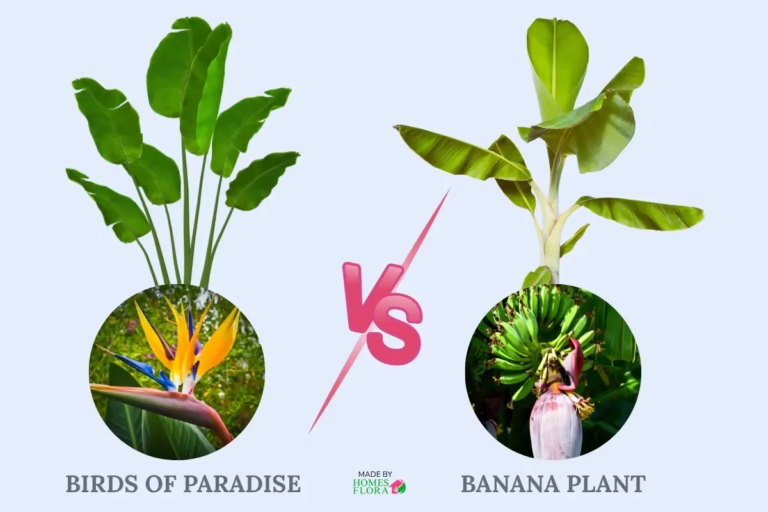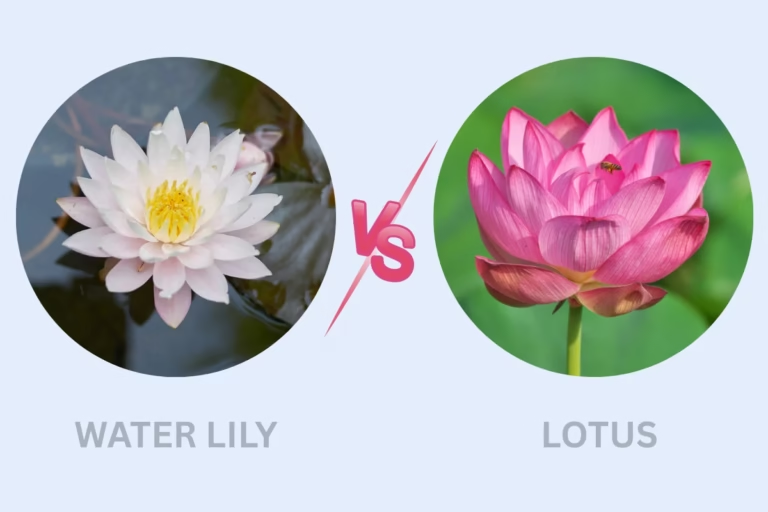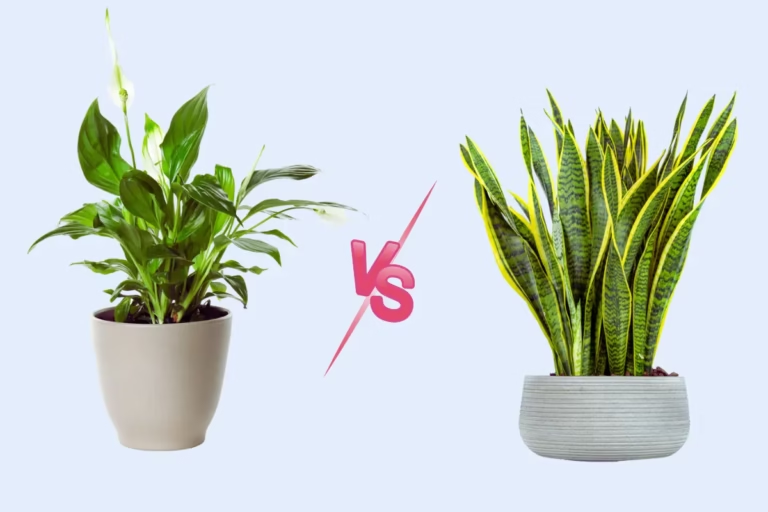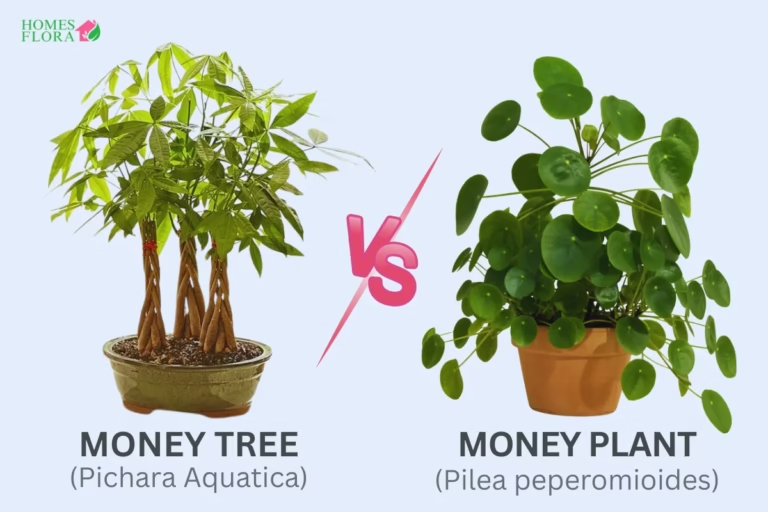Peace Lily vs Anthurium: Differences and Choose the Best One
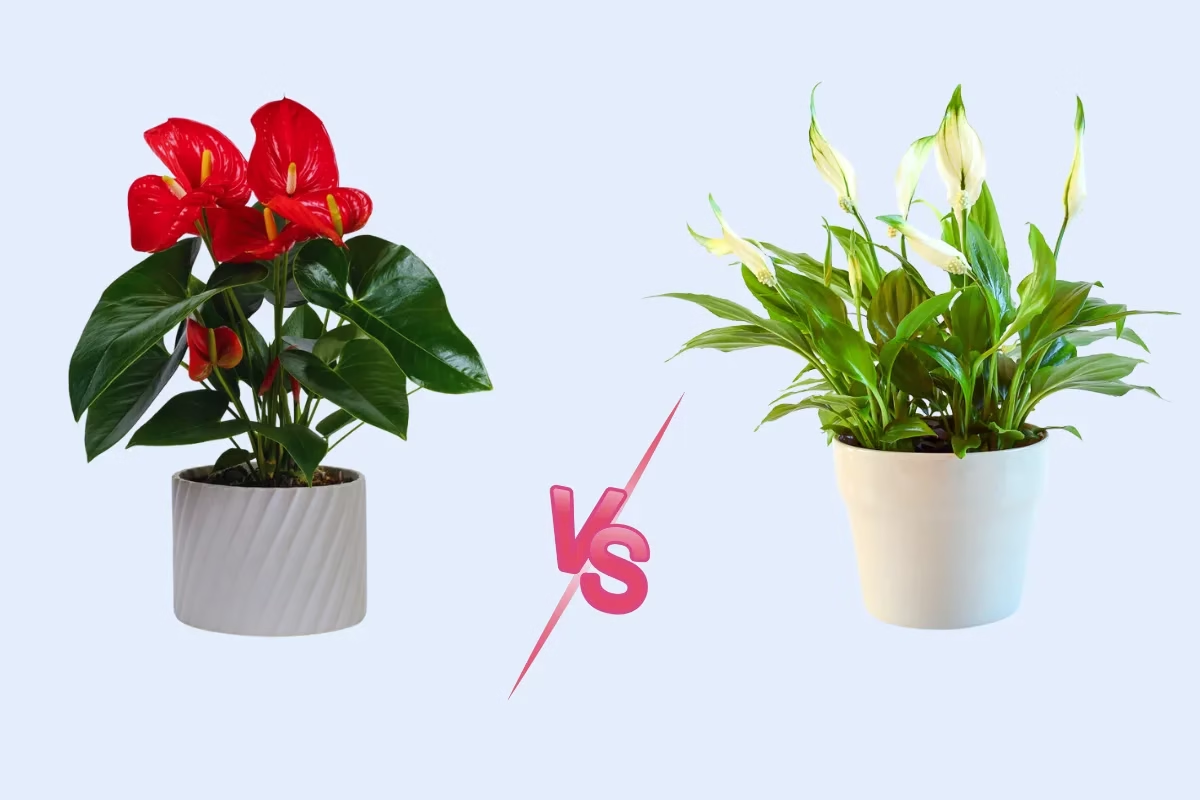
Can’t decide between a Peace Lily and an Anthurium? The Peace Lily is like a wise, gentle aunt—low drama, thrives on neglect, and still gifts you pure white flowers even when you forget her. Mildly irritating to pets. while the Flamingo Flower is like that glamorous cousin—bold, glossy, and flaunts red/pink ‘flowers’ (actually leaves!) for MONTHS. She’s high-maintenance but dazzling, loves humidity (bathroom queen!), and demands bright, indirect light. safe for pets if eaten. Find out which plant fits your space, lifestyle, and personality—because the right choice makes all the difference!
Spathiphyllum and Flamingo Flower comparison Table
Category | Peace Lily (Spathiphyllum) | Flamingo Flower (Anthurium) |
|---|---|---|
Scientific Name | Spathiphyllum wallisii (common) | Anthurium andraeanum (common) |
Other Names | White Sail, Cobra Plant | Painter’s Palette, Laceleaf |
Family | Araceae (Arum family) | Araceae (Arum family) |
Native To | Tropical Americas, Southeast Asia | Colombia, Ecuador (Rainforests) |
Toxicity | Mildly toxic (pets/humans) | Toxic (contains calcium oxalate) |
Lifespan | 3–5 years (longer with care) | 5+ years (slow grower) |
Special Feature | NASA-approved air purifier | Blooms last 2–3 months |
Peace Lily – The Silent Ninja of Houseplants
“Imagine a plant that thrives on your forgetfulness, blooms in your darkest corners, and fights invisible air toxins like a stealthy superhero. Its white flowers? Not flowers—ghostly little peace flags, waving at your stress. It’s the introvert of plants: low-maintenance, profound, and quietly judgmental when you overwater it. Perfect if you want greenery that won’t guilt-trip you for binge-watching Netflix instead of gardening.”
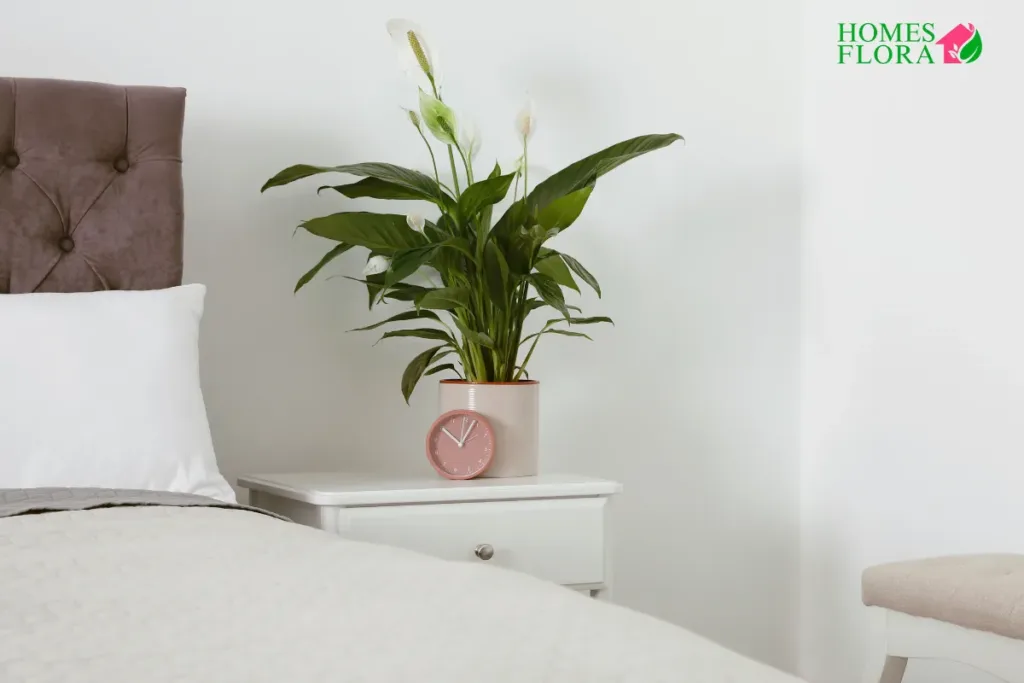
Flamingo Flower – The Drama Queen with a Heart of Gold
“This isn’t a plant—it’s a flamboyant flamingo in leaf form, strutting its shiny red/pink ‘flowers’ (fake news—they’re glorified leaf imposters) for months like it’s on a runway. It craves attention: ‘Mist me! Bright light! But no sunburn, peasant!’ Toxic if eaten? Obviously—divas are never low-risk. Choose this if you want a plant that demands applause every time you walk into the room.”

Anthurium vs Peace Lily: which one suits you?
Choosing between a Peace Lily and an Anthurium can be tricky, especially if you’re new to indoor plants. Both are stunning, low-maintenance, and air-purifying, but they have unique features that set them apart. Let’s dive into the key differences and similarities to help you decide which plant suits your home and lifestyle.
Flowers
Peace Lilies produce elegant white spathes that resemble a white flag of peace, blooming primarily in spring and summer. In contrast, Anthuriums feature vibrant, heart-shaped spathes in shades of red, pink, or white, blooming almost year-round under the right conditions. If you love subtle, elegant blooms, choose a Peace Lily. For bold, colorful flowers, go for an Anthurium.
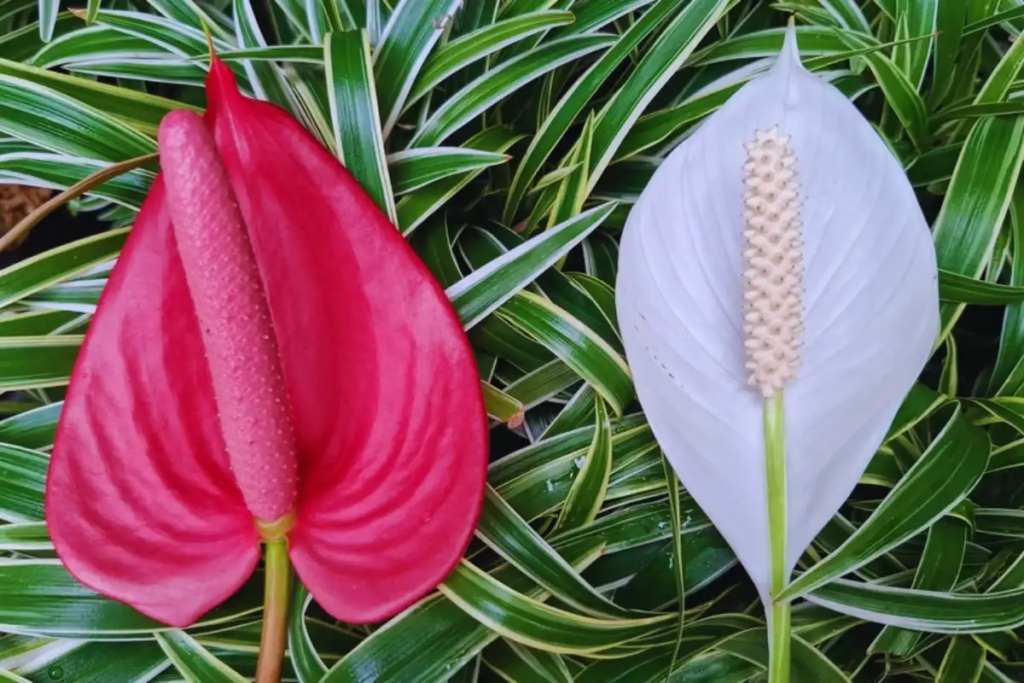
Foliage
Peace Lilies have glossy, dark green, oval-shaped leaves that grow in a cascading manner, adding a calming, tropical vibe. Anthuriums, on the other hand, feature glossy, heart-shaped leaves that are slightly thicker and more vibrant, complementing their bright flowers. Both plants have beautiful foliage, but Anthuriums offer a more tropical and vibrant look.
Light Requirements
Peace Lilies thrive in bright, indirect light but can tolerate low light conditions, making them ideal for offices or darker rooms. Anthuriums also prefer bright, indirect light but can handle medium light, though direct sunlight can fade their colorful blooms. Light Recuirments of Peace Lily is low-light environment.
Watering Needs
Water Peace Lilies when the top inch of soil feels dry, as overwatering can cause yellow leaves and underwatering leads to drooping. Anthuriums need watering when the top 1-2 inches of soil are dry, as they are sensitive to overwatering, which can lead to root rot. Peace Lilies are more forgiving with watering, making them better for beginners. Explore Peace lily watering schedule for proper watering.
Humidity Preferences
Peace Lilies love high humidity but can adapt to average home humidity levels, with brown leaf tips indicating low humidity. Anthuriums thrive in high humidity and may struggle in dry environments, requiring regular misting or a humidifier. Peace Lilies are a better choice for dry climates.
Toxicity Concern
Both Peace Lilies and Anthuriums are toxic to pets and humans if ingested, containing calcium oxalate crystals that cause mouth irritation and swelling. Keep them out of reach of pets and children.
Air-Purifying Abilities
Peace Lilies are proven to remove toxins like formaldehyde, benzene, and ammonia from the air, making them NASA-approved air purifiers. Anthuriums also remove toxins but are less studied, adding a tropical feel while improving air quality. Peace Lilies are more effective for air purification.
Maintenance and Care
Popular Types of Peace Lilies are low-maintenance and great for beginners, though they are prone to pests like spider mites if neglected. Anthuriums require slightly more attention, especially for humidity, and are susceptible to pests like aphids and mealybugs. Peace Lilies are easier to care for, while Anthuriums are better for experienced plant parents.
Lifespan and Growth
Peace Lilies live 5–10 years with proper care, growing slowly but steadily. Anthuriums live 5–7 years and grow faster, though they may require more frequent repotting. Peace lily lifespans is simiral to Anthrium, but Anthuriums need more space due to their faster growth.
spathiphyllum versus Flamingo flower! which is best for your Home?
Peace lily – Choose If You…
- Want a “Survivor” Plant – Thrives on neglect, forgives missed waterings.
- Have Low Light – Blooms even in shady corners (no sunburns!).
- Need Air Purification – NASA-approved toxin fighter.
- Are a Pet Owner – Mildly toxic (unlikely to harm unless eaten in bulk).
- Love Subtle Beauty – White blooms = timeless, calming elegance.
Flamingo flower – Choose If You…
- Crave Drama – Glossy leaves + neon “flowers” steal attention.
- Have Bright Indirect Light – East/west window = perfect runway.
- Enjoy Pampering Plants – Loves misting, humidity, and consistency.
- Want Long-Lasting Color – Spathes last 2-3 months (unlike fleeting flowers).
- Don’t Have Pets – Toxic if chewed (keep high up!).
Related: Money Tree Vs Umbrella Tree & Peace lily vs Calla lily
Final Thoughts
Choosing between a Peace Lily and an Anthurium depends on your preferences and lifestyle. If you want a low-maintenance, elegant plant that thrives in low light, go for the Peace Lily. If you’re drawn to bold, colorful blooms and don’t mind a bit more care, the Anthurium is your perfect match. At HomesFlora, we’re here to help you make the best choice for your home.

